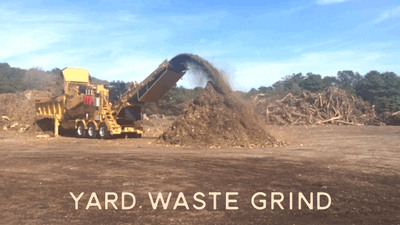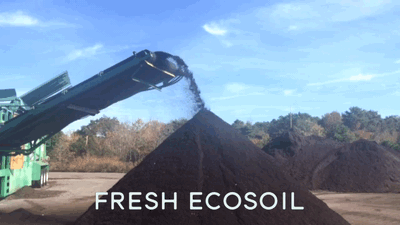Oct 29, 2015
By Sara Verrillo
ACUA’s Environmental Park is home to a composting facility that turns yard waste that’s collected from Atlantic County homes or dropped off at our facility into our 100% recycled compost product, EcoSoil.
Yard Waste 101
Nationally, yard waste accounts for approximately 14 percent* of the waste stream. Through composting, we divert this material from the landfill and create a usable and effective product.
Yard waste typically consists of grass clippings, leaves, sticks, and other tree trimmings. Because it is recycled into compost, it's important that only accepted items are placed out in your yard waste collection. Please DO NOT include:
- Plastic bags – If you bag your yard waste, use compostable or paper Kraft bags (available to purchase at ACUA or at local home improvement stores)
- Pumpkins
- Bamboo
- Cornstalks
- Hay or straw bales
- Garbage or food items
How EcoSoil is Made
Once yard waste makes its way to our compost site, it goes through a grinder, which breaks down the material into finer pieces. It is then placed in windrows about six feet high and 500 feet long where it sits for several months to decompose. During this period of decomposition, the windrows are turned weekly, which adds oxygen to the pile, speeds up the process, and helps minimize odors.

After the material is finished curing, it is processed through a screening machine to remove any large debris and refine the compost. The final product, EcoSoil, is ready to be used in flower beds and vegetable gardens!

Because it is made with natural materials, EcoSoil is filled with essential nutrients that enrich soil. It helps increase moisture capacity and stabilizes soils that are sandy, loamy or clay-based. Each year more than 20,600 tons of yard waste is processed and more than 6,500 cubic yards are sold to area landscapers and residents.
Watch the entire process in this short video:
Additional Resources:
*Data from EPA’s 2012 U.S. Waste Composition Study